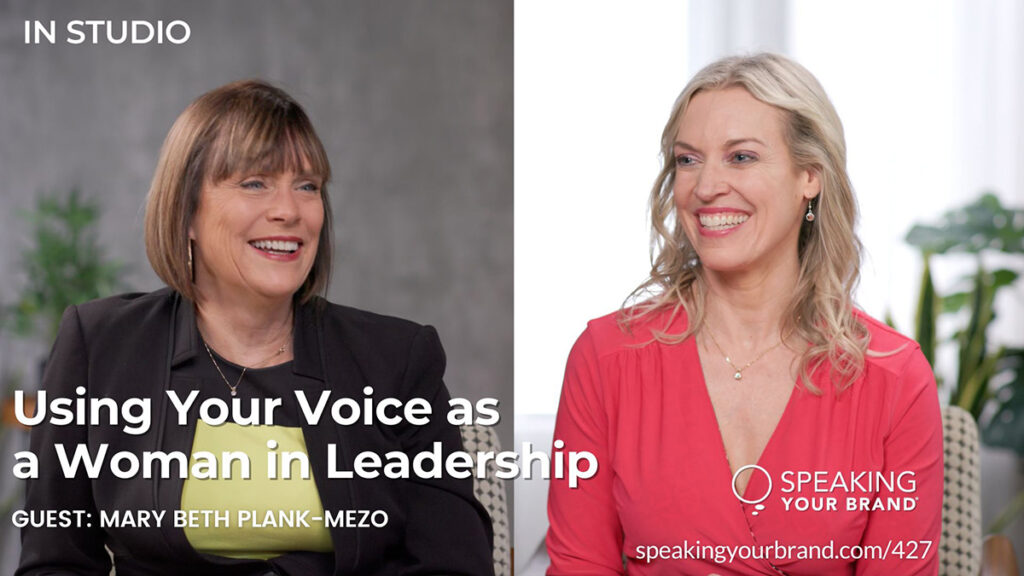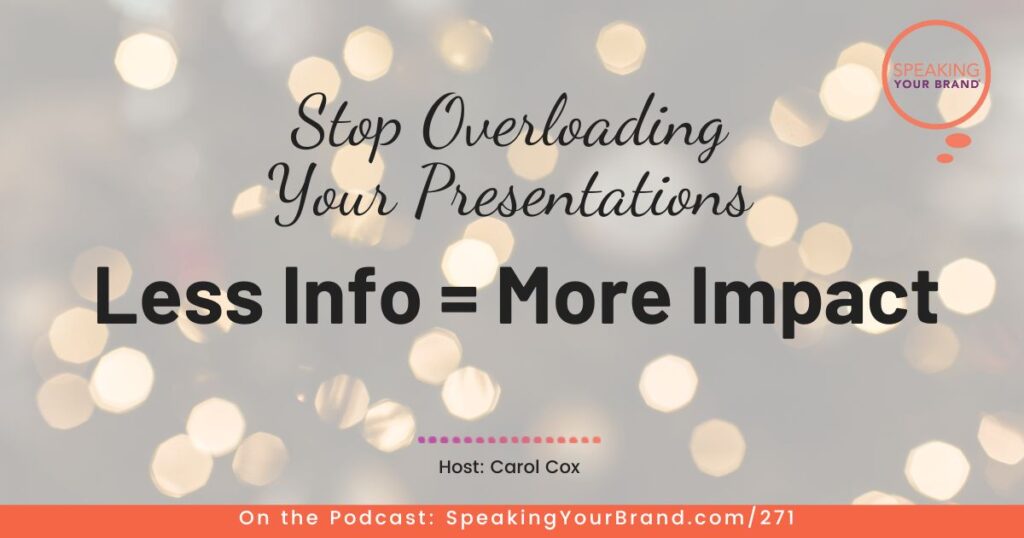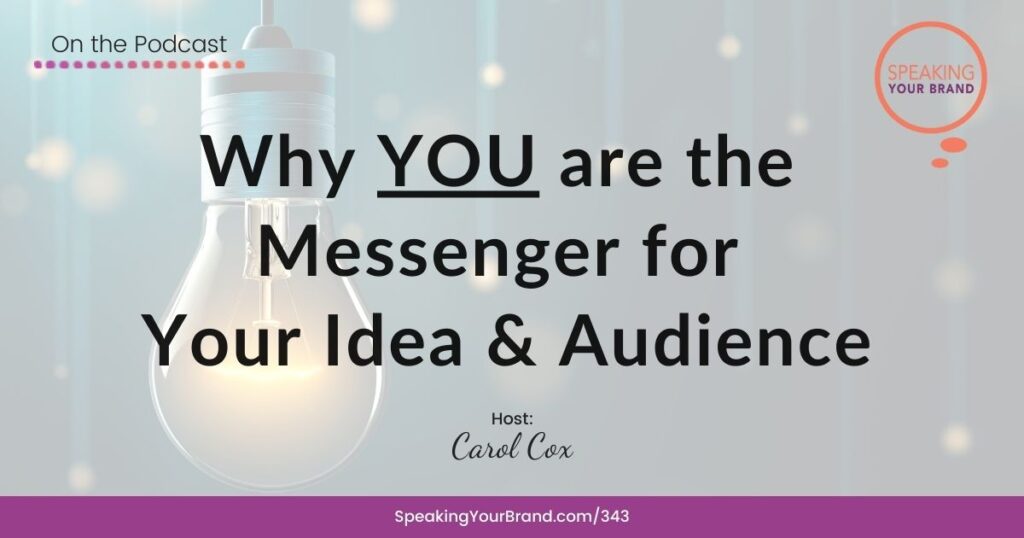Subscribe to the podcast!
Are you getting an ROI from your speaking engagements?
Whether that ROI comes in the form of new leads and clients or actual speaker fees, your speaking should be working for you, not just leaving you with warm fuzzies and a thank-you email.
In this post, I’m walking you through two powerful ways to monetize your speaking:
-
Lead generation talks
-
Paid speaking engagements
Let’s break down both, along with real-world strategies you can start using right away.
Part 1: Getting Leads and Clients from Your Speaking Engagements
You don’t need to sell from the stage. (In fact, many events prohibit it!)
But that doesn’t mean you can’t guide your audience toward working with you.
Here’s how.
✅ 1. Align Your Talk Content with Your Offer
This is where so many speakers go off track. They start with a great topic and then cram in all the content they can think of. The problem? It’s not leading anywhere. It’s not connected to the transformation their audience actually wants – or to the service or product they offer.
What to do instead:
Start with the end in mind.
Ask yourself:
👉 “What’s the offer I want to lead people to?”
👉 “What do they need to believe, understand, or feel by the end of my talk to be ready for that?”
Then reverse engineer your talk from there.
We use our Signature Talk Canvas® framework to help our clients do exactly this. (Check out Episode 288 for a walkthrough of the framework.)
✅ 2. Plant “Sales Seeds” Throughout Your Talk
If you’re not allowed to pitch directly (or if it just doesn’t feel right for you), you can still make sure your audience knows what you do and who you help.
How?
By sharing client stories, examples, and results naturally within your talk.
Here’s what that can sound like:
“In our Thought Leader Academy, we work with women entrepreneurs who are ready to develop their signature talk. One of the biggest things we see is…”
That’s not a pitch. That’s a story. And it tells your audience exactly how you help people without the awkwardness.
✅ 3. Make a Clear Call to Action
Even if your talk is inspirational or designed as a keynote, your audience still wants to know what to do next.
-
If it’s a business talk, invite them to book a call or check out your program.
-
If it’s a mission-driven keynote, offer a specific action they can take related to your message.
Action Step:
Practice ending your talks with a strong, memorable CTA. Don’t rush it or mumble through it. Own it!
✅ 4. Use the “Magic” Feedback Form
This is the #1 thing I recommend to our clients who want more leads from speaking engagements.
Here’s how it works:
At the end of your in-person talk, hand out a simple paper feedback form. Include:
-
Name and email
-
“What was your #1 takeaway?”
-
“What’s one thing I could improve?”
-
A few checkboxes, such as:
-
“I’d like to schedule a consult call.”
-
“Send me info about your [program/service].”
-
“Add me to your email list.”
-
“I’d love to refer you to another event.”
-
✨ This gives you warm leads to follow up with – right after your talk, while the energy is high.
➡️ Click here to download the example workbook with feedback form (no opt-in needed)
Part 2: Getting Paid to Speak
Yes, you can get paid to speak—and you deserve to.
Here’s how to start (or grow) your paid speaking career.
✅ 1. Know What You Charge
If someone asked you right now, “What’s your speaker fee?”—would you know what to say?
Even if your rates vary depending on the event, you need a starting point.
💡 Examples of what our clients charge:
-
$3,500–$10,000+ for keynotes
-
$1,500–$5,000 for workshops or panels
-
$15,000+ for corporate trainings
Start somewhere—and increase from there.
Don’t undervalue yourself because “you love speaking” or because “other people speak for free.”
Remember: charging for your expertise doesn’t make you less generous—it makes your business sustainable.
✅ 2. Put Your Speaker Fee on Your Website
I know this one feels scary—but trust me, it makes a huge difference.
If you don’t have any pricing info on your site, event organizers will often assume you speak for free.
Try this instead:
“Keynotes start at $5,000.”
“Workshops available starting at $3,000.”
“Custom engagements available. Contact me for rates.”
This sets expectations, filters out misaligned inquiries, and communicates your value from the start.
✅ 3. Own the Conversation with Event Organizers
When an organizer reaches out, get on Zoom with them. Don’t just reply over email.
Ask:
-
What’s the goal of the event?
-
Who’s in the audience?
-
What would success look like for you?
Then tailor your pitch using their own language.
They’ll feel heard and you’ll feel confident showing how you’re the right fit.
That’s exactly what I did to land a paid keynote. The organizer found me on LinkedIn (yep, your profile matters!) and after a great conversation, they hired me over other speakers they were considering.
Ready to Monetize Your Speaking?
In our Thought Leader Academy, we help you:
-
Clarify your message and thought leadership
-
Develop a powerful signature talk
-
Navigate the business of speaking so you get both clients and paid gigs
🗓️ Learn more and apply: speakingyourbrand.com/academy
Action Steps Recap:
✅ Reverse engineer your talk to align with your offer
✅ Use client stories and examples to “sell without selling”
✅ Include a confident call to action at the end of your talk
✅ Use a feedback form to collect leads on the spot
✅ Know your speaker fees—and write them down!
✅ Put your fees (or starting range) on your website
✅ Book a call with event organizers and lead the conversation
You have something powerful to share and people are ready to hear it.
Make sure you’re also being compensated for the transformation you provide.








